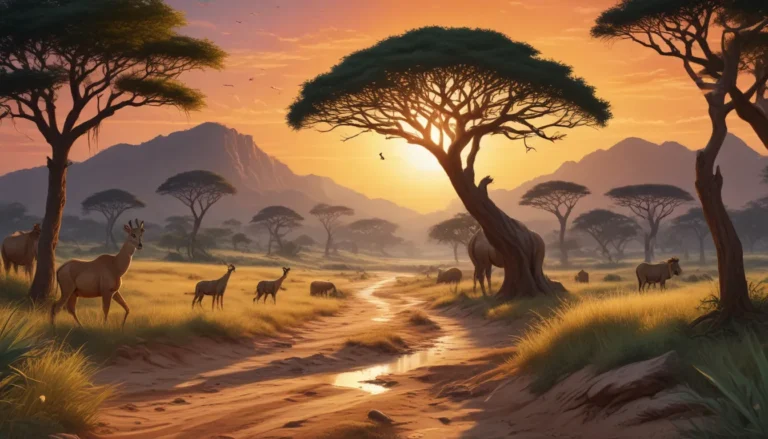A Note About Images: The images used in our articles are for illustration purposes only and may not exactly match the content. They are meant to engage readers, but the text should be relied upon for accurate information.
Population distribution is a captivating field that offers profound insights into the social, economic, and environmental dimensions of different regions. By examining how people are spread out across the Earth’s surface, we can unravel the complexities of human settlements and their profound impact on our planet. In this article, we will uncover 17 astounding facts about population distribution that will illuminate the global patterns and trends observed worldwide. From densely populated metropolises to remote and sparsely inhabited areas, these facts will showcase the diverse ways in which populations inhabit various parts of the world.
Understanding the Impact of Population Distribution
It is crucial to recognize that where people reside can influence a wide array of aspects in society. The distribution of populations shapes politics, culture, and environmental dynamics. As the world undergoes constant change, factors such as migration, aging populations, and historical events continually impact how populations are distributed across the globe.
Global Population Giants: China and India
Two countries stand out as the most populous in the world: China and India. Boasting populations of over 1.4 billion people each, these nations wield significant influence on global demographics, showcasing the profound impact of population distribution on a worldwide scale.
Tokyo: A Megacity Marvel
Claiming the title of the world’s most populous city is Tokyo, Japan. With over 37 million inhabitants, Tokyo harbors a staggering population density, with millions of people coexisting in a relatively compact area. This exemplifies the magnitude of urbanization and the intricate nature of population distribution in bustling metropolitan hubs.
The Melting Pot: Population Diversity in the United States
The United States stands as a testament to diverse population distribution, shaped by a rich history of immigration. The country’s demographic landscape is characterized by a myriad of ethnic backgrounds and cultures, showcasing the vibrancy and complexity of population dynamics.
Varied Population Densities: A Global Spectrum
Population density varies significantly from country to country. Nations like Monaco exhibit extremely high population densities, while others such as Greenland maintain sparse populations. Factors like geography, urbanization, and economic development contribute to these diverse population density profiles.
Urban vs. Rural: Contrasting Population Dynamics
Urban areas tend to exhibit higher population densities compared to rural regions. This disparity stems from factors such as job opportunities, access to services, and infrastructure development. This urban-rural divide underscores the intricate interplay between population distribution and spatial dynamics.
The Patchwork Planet: Uneven Population Distribution
The distribution of the world’s population is characterized by stark imbalances, with some areas boasting high population concentrations while others remain sparsely populated. Climate, resources, and historical legacies all shape this uneven distribution, highlighting the intricate tapestry of global population patterns.
Political Representation and Population Distribution
In countries with representative governments, population distribution plays a pivotal role in determining political representation. Electoral districts are often delineated to ensure equitable representation based on population sizes, underscoring the significance of demographic dynamics in shaping political landscapes.
Migration Trends: Shaping Population Distribution
The phenomenon of rural-to-urban migration exerts a profound influence on population distribution patterns. Driven by economic opportunities and improved living conditions, this trend reshapes demographic landscapes, emphasizing the transformative impact of human mobility on population dynamics.
Aging Populations: A Demographic Challenge
The prevalence of aging populations poses formidable challenges for population distribution. Issues such as healthcare provision, housing, and social support come to the forefront as population distributions skew towards older age cohorts, highlighting the evolving demographic challenges faced by societies worldwide.
Resource Allocation and Population Distribution
The distribution of populations fundamentally impacts the allocation of resources such as water, energy, and food. Effective planning and management strategies must account for population distribution to ensure fair and equitable access to critical resources, safeguarding sustainability and social equity.
Infrastructure Strain in Dense Populations
High population density in urban areas can strain infrastructure capacities, including transportation, housing, and public services. Thoughtful urban planning is essential to accommodate the needs of burgeoning populations and mitigate the strains on essential infrastructure systems.
Cultural Kaleidoscope: Population Distribution and Diversity
Population distribution plays a pivotal role in shaping cultural diversity, fostering a rich tapestry of customs, languages, and traditions across different regions. The unique heritage of each area is intricately intertwined with the demographics of its inhabitants, underscoring the profound cultural influence of population distributions.
Economic Impacts of Population Distribution
The distribution of populations exerts a profound influence on economic growth. Concentrated population centers often spur increased economic activity and market potential, while regions with sparse populations may grapple with economic challenges, elucidating the intricate relationship between population distribution and economic dynamics.
Environmental Influences on Population Distribution
Climate, geography, and natural resources serve as pivotal factors shaping population distribution patterns. Coastal areas, fertile lands, and temperate climates often attract larger populations, underscoring the deep interconnection between environmental factors and human settlement patterns.
Healthcare Access Disparities
Uneven population distribution can give rise to disparities in healthcare access. Rural areas with low population densities may struggle to provide adequate healthcare services, while urban centers often boast a higher concentration of healthcare facilities, accentuating the need for equitable healthcare distribution strategies.
Historical Legacies and Population Distribution
Historical events such as wars, migrations, and colonization have left enduring imprints on population distribution patterns. The echoes of past events continue to reverberate in the demographic landscapes of various regions, underscoring the profound impact of historical legacies on present-day population distributions.
Dynamic Nature of Population Distribution
Population distribution is a fluid and ever-evolving phenomenon. Migration, urbanization, and economic shifts continuously reshape population distribution patterns, underscoring the dynamic nature of demographic dynamics and the need for adaptive strategies in addressing changing population landscapes.
Conclusion: Navigating the Labyrinth of Population Distribution
In essence, population distribution serves as a captivating lens through which to unravel the complexities of human settlement patterns and their multifaceted impacts on society. From bustling urban metropolises to remote rural backdrops, the diverse landscape of population distribution presents a myriad of challenges and opportunities for global communities.
By exploring the astonishing facts about population distribution, we gain a deeper appreciation for the intricate interplay between demographics, economics, and social dynamics, illuminating the fascinating mosaic of human civilization. From the effects of urbanization to the consequences of migration, these facts unveil the dynamic tapestry of population distribution and its profound resonance in shaping the contours of our world.
FAQs: Navigating the Terrain of Population Distribution
Q: What is population distribution?
A: Population distribution refers to how people are spread across a geographic area, such as a country or a region.
Q: What are the factors that influence population distribution?
A: Several factors impact population distribution, including climate, topography, resources, economic opportunities, infrastructure, and government policies.
Q: Why is population distribution important?
A: Understanding population distribution aids in urban planning, resource allocation, infrastructure development, and policy-making decisions. It also offers insights into demographic trends and social dynamics.
Q: What is urbanization?
A: Urbanization is the process of the population shift from rural to urban areas, resulting in the growth of cities and towns.
Q: How does migration affect population distribution?
A: Migration plays a significant role in shaping population distribution. People moving from one region to another can change the demographics of both the place they leave and the place they settle.
Q: What are some examples of population distribution patterns?
A: Population distribution patterns can vary, including clustered (concentrated in specific areas), dispersed (spread out evenly), and linear (distributed along a line, such as a river or a road).
Q: How does population distribution impact the environment?
A: Population distribution influences the demand for resources, land use, and the strain on natural ecosystems. Concentrated populations often result in increased urbanization, leading to environmental challenges.
Q: Can population distribution change over time?
A: Yes, population distribution is not static. It can change due to various factors, such as migration, urbanization, natural disasters, or economic opportunities.
Q: Are there any global population distribution trends?
A: Yes, some global population distribution trends include the growth of urban areas, depopulation of rural regions, and the concentration of populations in specific regions or countries.
Q: How can governments address imbalanced population distribution?
A: Governments can implement policies and initiatives to incentivize migration to less populated areas, promote regional development, improve infrastructure, and provide economic opportunities.
Embracing Knowledge and Diversity: Our Commitment to Authenticity
At our core, we are dedicated to delivering trustworthy and engaging content that enriches your exploration and learning journey. Every fact shared on our platform is contributed by real users like you, imbuing our database with a wealth of diverse insights and information. To uphold the highest standards of accuracy and reliability, our diligent editors meticulously review each submission, ensuring that the facts we present are not only captivating but also credible. Rest assured in our unwavering commitment to quality and authenticity as you delve into the fascinating realm of population distribution.






